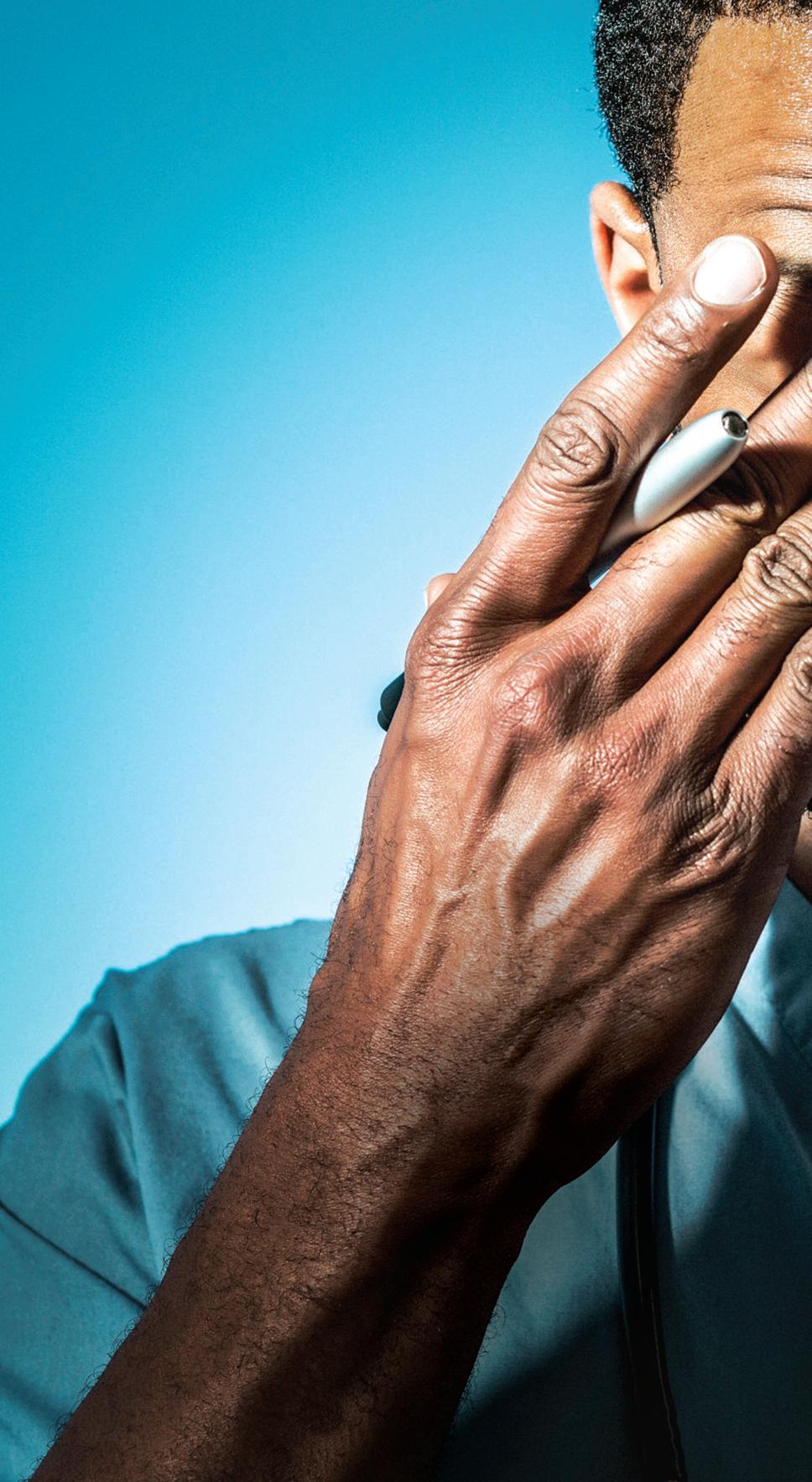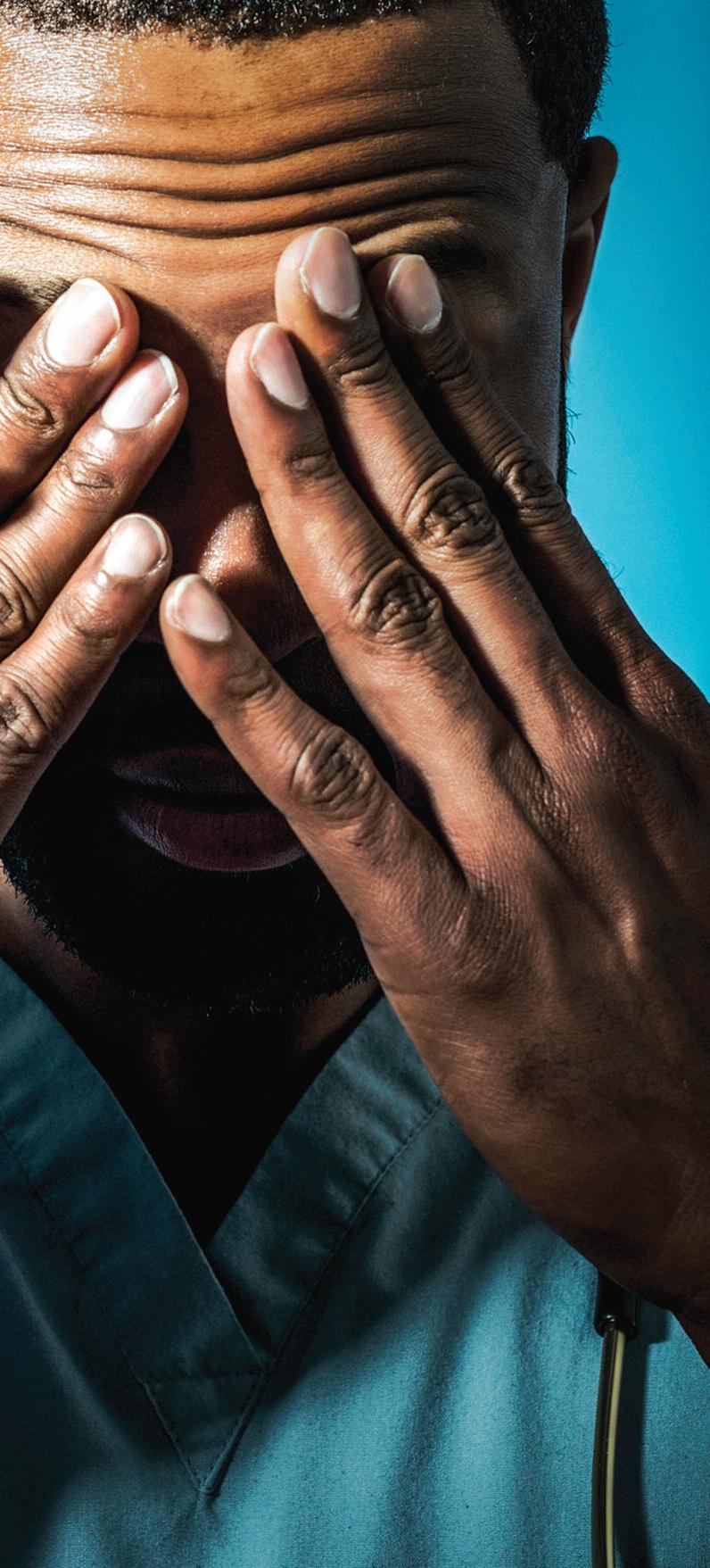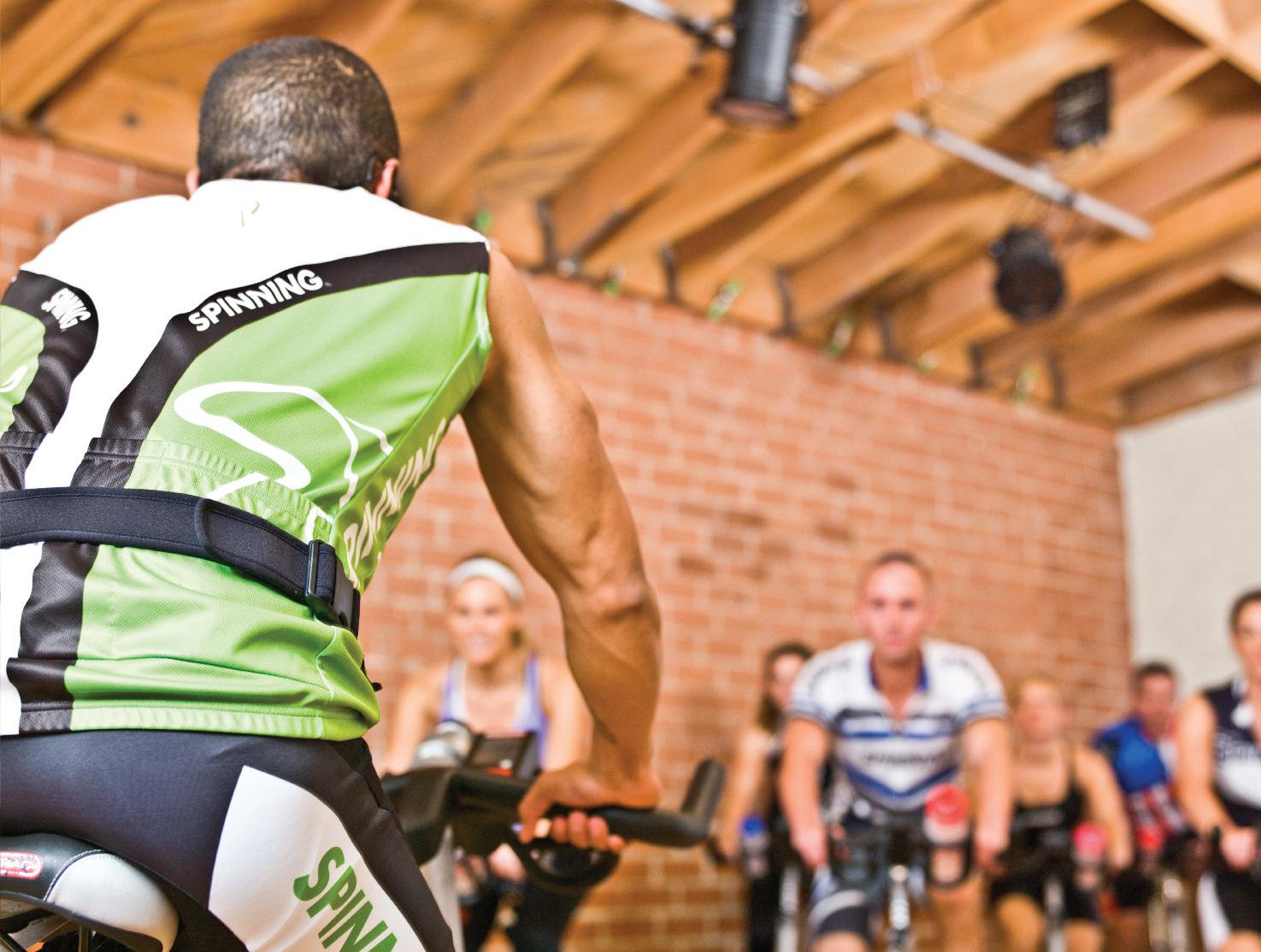
14 minute read
SLEEP HEALTH
W R I T T E N B Y R A Y M O N D H A L L , M D SLEEP SCIENCE EXPERT, INVENTOR, AND SPORTS MEDICINE CHIROPRACTOR OF PACIFIC COAST SPORTS MEDICINE, LA
MO R E T H A N 4 0 M I L L I O N A M E R I C A N S S U F F E R F R O M C H R O N I C S L E E P D I S O R D E R S W I T H D E V A S T A T I N G C O N S E Q U E N C E S . Sleep health has been neglected for so long, we ’ ve become a nation that is carrying the weight of increased obesity, auto accidents caused by drowsy driving (even more than texting), increased neck pain and even advanced signs of aging through poor quality and disrupted sleep.
Advertisement


Proper sleep hygiene, which is the routine that promotes healthy sleep patterns, can prevent the development of sleep problems and disorders as well as being an important factor in the quest to stay looking and feeling as young as possible throughout your life. Here are recommendations to take control of your sleep health and live your optimal life:
• Tired in the afternoon?
Take a nap or siesta! Napping has been shown to improve productivity, improve alertness, reduce stress and the risk of heart disease, and reduce accidents at work and on the road. Even a work-friendly, 10- to 20-minute nap should be enough to set you up for a productive afternoon.
• Be consistent with sleep. Sleep is as important to a person as fuel is to a car, both in terms of quality and quantity. You need proper sleep to run your physiological engine. Poor quality sleep is like water in your fuel tank. You can ’t store extra deep sleep or REM sleep, so approach your sleep health with balance and respect. It takes approximately 90 minutes to complete one sleep cycle, and a good night’ s rest includes about five full cycles. Allowing yourself enough rest has great benefits during the daytime, as you will feel rejuvenated and alert and will be less prone to illness.
• Reduce pain and improve
healing responses. After 29 years of treating headaches, neck and back injuries, as well as chronic muscle and joint pain, I firmly believe that sleep disruptions or sleep deprivation can have a major impact on pain as well as healing. Disruptive sleep due to abnormal breathing patterns can literally change oxygen concentrations in the bloodstream, which can also lead to headaches and poor healing.






• Stay young! Sleep affects every vital organ of our bodies in a profound way and can dramatically affect the aging process. Visible aging begins when the breakdown and oxidation of tissue exceeds the normal growth and maintenance of tissues within our bodies. Skin is the most visually dramatic and recognizable organ that expresses aging. Aim for optimal aging, or maximizing the body ’ s natural, daily healing process to rejuvenate and restore cellular tissue as well as actively minimize the breakdown and oxidation of all of the trillions of cells within your body. Good sleep hygiene is a critical factor in optimal aging.
• Improve mental alertness. Think of your sleep control mechanism as a variable dimmer switch that controls your lights. When you crawl into bed from a busy day, your dimmer switch is on high. You slowly lower the switch as you progress through the different stages of sleep; in stage 4, deep or delta sleep, your light is completely dark. Deep sleep is very important for hormone production and physiological regeneration. After about 50-60 minutes, your dimmer reverses itself, creating a brighter “light” and REM sleep kicks in. REM sleep is sometimes called paradoxical sleep because your muscles become essentially deactivated but your brain activity is similar to when you are awake. REM sleep lasts about 20-30 minutes and is said to be essential. We can consider REM sleep in computer terms: during REM sleep, you empty your recycle bin (decreasing some “ mind clutter ”) and transfer information from your memory to your hard drive. REM sleep has been scientifically proven to be a creative stage of sleep that can increase the associative networks in our brain and is linked to improved learning, focus and memory.
• Make wise choices about your sleep environment.
Seek out a mattress that supports your body (not one that molds around you) and remains cool and breathable. Find a pillow that offers correct, anatomical support for your neck to open your airways and increase oxygenation. Your pillow should not push your head into a forward posture, similar to the posture you may assume during the day, with your shoulders curved and head and neck pushed forward over a computer or smartphone. When you sleep on your back or side, your pillow should support and lengthen your spine, encouraging more restful sleep, preventive health and improved beauty sleep. Sleeping on your back, with the correct contour for your neck, prevents wrinkles and promotes healthy sleep, naturally!




HAVE DIABETES?

MAKE SPINNING A KEY PART OF A HEALTHY LIFESTYLE
W R I T T E N B Y M A R C I W I L L I A M S


IN D I V I D U A L S W I T H A D I A B E T E S D I A G N O S I S U N D E R S T A N D T H A T T H E Y F A C E C H A L L E N G E S B E Y O N D S I M P LY M A I N T A I N I N G B L O O D S U G A R

L E V E L S . They must also manage their weight, energy and a healthy, happy lifestyle.
Those challenges can be addressed by finding the right exercise routine that tones muscles, improves cardiovascular endurance and offers a fun way to spend 45-60 minutes exercising at least three times a week. Spinning can address diabetes risk and symptoms as part of a healthy lifestyle.
Spinning is an upbeat, calorieburning, indoor cycling program that offers energizing music and the encouraging guidance of certified instructors. Like many fitness programs, Spinning, which has helped millions of people around the world meet and exceed their fitness goals for over 20 years, can help decrease the risk of type 2 diabetes by up to 58 percent and can help reduce symptoms if you have already been diagnosed.
Regular activity is a key part of managing diabetes, along with proper meal planning, taking medications as prescribed and stress management. Adding aerobic exercise, such as Spinning, can assist the cells in becoming more sensitive to insulin, which helps the body to work more efficiently. These cells also remove glucose from the blood using a mechanism separate from insulin during exercise.
Regular participation in Spinning rides will help lower blood pressure, a key worry among diabetes patients, by positively impacting the blood/lipid ratio. Spinning may also lower the risk of heart disease and stroke by strengthening the heart and improving circulation, in addition to burning calories, aiding in weight loss and increasing healthy, lean muscle tissue.
Patients with diabetes typically feel tired or lack in energy for life ’ s daily tasks. Spinning has been proven to help increase the amount of energy a person feels but is also joint friendly, as there is no “ pounding ” of the knees on pavement like one might experience with running.
Even though there is an instructor leading all Spinning classes, there is no pressure like one might find in other group exercise classes as it is designed with individual riders in mind. Participants can easily modify or adapt to their own unique fitness levels with a simple twist of the resistance knob. They can also control the intensity with pedal speed or position by sitting versus standing.
For anyone facing a chronic condition like diabetes, the diagnosis itself can be self-limiting. Group exercise offers social benefits and builds confidence in an empowering way; it’ s a reminder that you are more than your medical label. The countless millions who are part of the world-wide Spinning community are also there to help lend a hand and offer support whenever needed, even outside of the Spinning studio. Once you ’ re part of Spinning, you become part of something that is bigger than you and is incredibly rewarding.
Effective for all ages, genders and fitness levels, Spinning is great way to strengthen muscles, increase bone density, relieve stress and improve sleep. There are over 35,000 official Spinning facilities around the world. To find one near you, visit www.Spinning.com and ride your way to wellness.

S&W
Marci Williams currently works as a center director, a wellness coach, and a management consultant. She directs a large recreation and fitness facility in which she oversees the day-to-day administration, operations, and programming. She has over 28 years of experience in the fitness and recreation industries, both in the private and public sector. She holds multiple certifications, along with a degree in psychology. To learn more, visit www.Spinning.com.
Marci Williams

WHAT IS LUCID DREAMING?

W R I T T E N B Y C H A R L I E M O R L E Y
LU C I D D R E A M I N G I S O N E O F T H E H O T T E S T T O P I C S W I T H I N S L E E P A N D D R E A M R E S E A R C H R I G H T N O W , B U T W H A T I S I T ? How does
it work? And crucially, can it help us to sleep better?
Charlie Morley, author of the bestselling book on the subject, Dreams of Awakening, helps us find out.
SO WHAT IS A LUCID DREAM?
A lucid dream is a dream in which the dreamer is consciously aware that he is dreaming while the dream is happening. A lucid dream is not just a very vivid dream or a very intense dream. Most people have experienced this type of dream at some point in their lives. Through the process of learning the art of lucid dreaming, you can experience this amazing phenomenon at will.
In a lucid dream, the dreamer has not awakened. In fact, he is sound asleep but part of the brain has reactivated, allowing the dreamer to experience the dream state with self-reflective awareness. Once you know that you are dreaming as you are dreaming, you gain access to the most powerful virtual reality generator in existence: your mind.


Hay House author Charlie Morley received the traditional “ authorization to teach” lucid dreaming from the Tibetan Buddhist master Lama Yeshe Rinpoche in 2008 and was asked to teach by meditation teacher Rob Nairn, who described him as “the most authentic practitioner of lucid dreaming and dream yoga teaching in Europe. ” Charlie has run retreats and workshops around the world, written the book Dreams of Awakening, and given the first talk on lucid dreaming at the well-known “TED” conferences. You can learn more about Charlie at www.charliemorley.com or by watching Charlie ’ s TED talk on YouTube (www.youtube.com/watch?v=p1i6A7t6L2g).
Charlie Morley
SOUNDS GREAT, BUT DO WE HAVE SCIENTIFIC PROOF OF ALL THIS?
Yes. Up until the late 70’ s, lucid dreaming was scoffed at by much of the scientific community as a “ paradoxical impossibility, ” which had no data to support its validity other than the subjective accounts of the lucid dreamers themselves. However, in the early 80’ s lucid dreaming was scientifically verified through the joint efforts of Stephen LaBerge and Keith Herne (both universitybased sleep researchers).
More recently, studies from Frankfurt University ’ s neurological clinic and the Max Planck Institute of Psychiatry found that specific alterations to brain physiology appeared in lucid dreamers. Using brain-imaging technology such as magnetic resonance tomography and EEG, scientists can now pinpoint the actual “‘Aha! I’ m dreaming!”’ moment of lucid awareness and its neurophysiological correlates. The researchers concluded that “lucid dreaming constitutes a hybrid state of consciousness with definable and measurable differences from the waking state and from the REM (rapid-eye movement) dream state. ” They discovered that when lucid consciousness was attained within the dream, activity in areas associated with self-assessment and self-perception increased markedly within seconds. The apparent paradox of being both aware and asleep, which had previously caused a lot of resistance and skepticism from the scientific establishment, was simply a failure to understand how two distinct brain regions could be activated simultaneously.
OK. SO IT’S BEEN SCIENTIFICALLY PROVEN, BUT WHAT’S THE POINT OF LUCID DREAMING?
A person who is having a lucid dream is conscious within the unconscious. This is a similar state to that used by hypnotherapists to guide us into the unconscious mind and offer suggestions for healing. However, in a lucid dream you are not only experiencing a much deeper level of the unconscious (you can ’t get more unconscious than asleep) but you also gain access to it of your own volition. In lucid dreams, we gain conscious access to the vast storehouse of knowledge that resides in our unconscious mind and thus open up a possibility to heal ourselves from addictions, phobias, negative thought processes, and limiting belief systems—all while we are sound asleep. I explore the benefits of lucid dreaming and teach how to actually do it in my book, Dreams of Awakening.
BUT WON’T I WAKE UP TIRED?
No, in fact most people wake up feeling much more refreshed from lucid dreams that from everyday non-lucid ones! Lucid dreaming occurs almost exclusively within REM sleep, which is not a restful sleep state; in fact, an alternate name for REM sleep is “ paradoxical sleep, ” the paradox being that the brain is actually more active during dreaming than it is while we are awake. If we are not resting during our dreams, we might as well use them for self-development and psychological healing, right? Sleep research has demonstrated that once we are fully aware within our dreams, the brain starts exhibiting certain high-frequency brain waves that have been linked to feelings of oneness and psychological contentment, which will lead to a much more refreshing sleep.
SOUNDS GREAT! HOW DO I SIGN UP?
There are loads of books available on the subject and some great websites too, which will help you to learn how to lucid dream. Get Googling! If you want a more practical experience, you can check out my workshop schedule for next year at www.charliemorley.com. S&W







